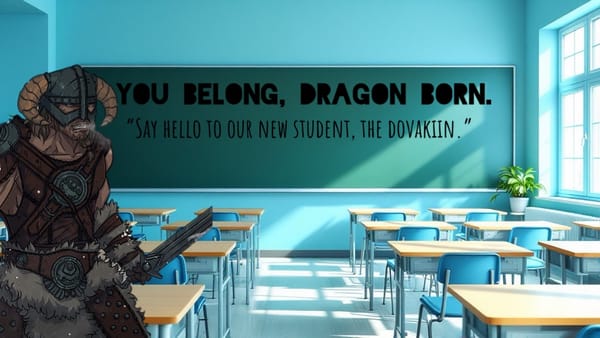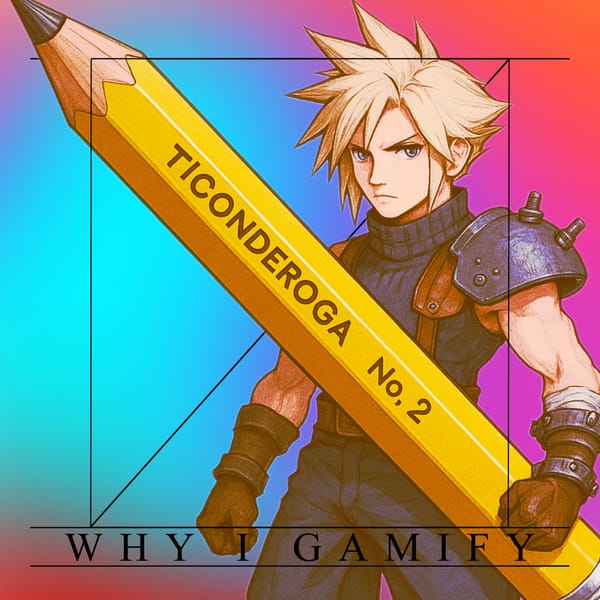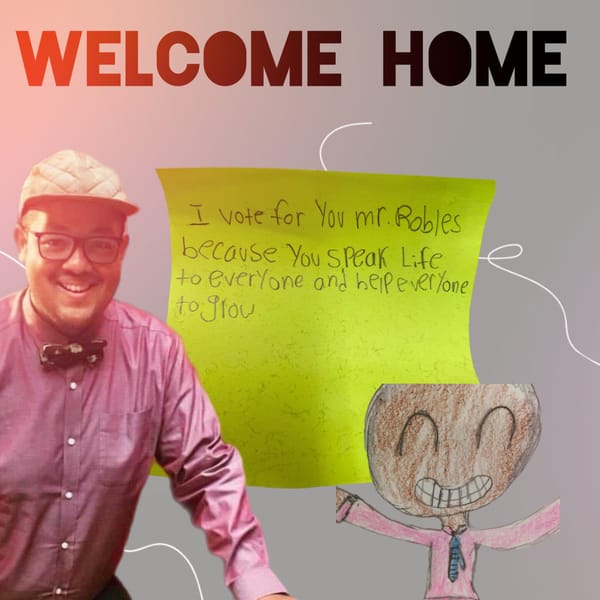Goblin, The Mayor of Brooklyn
I bring Goblin into the classroom because he reminds me who I want to be as a teacher.
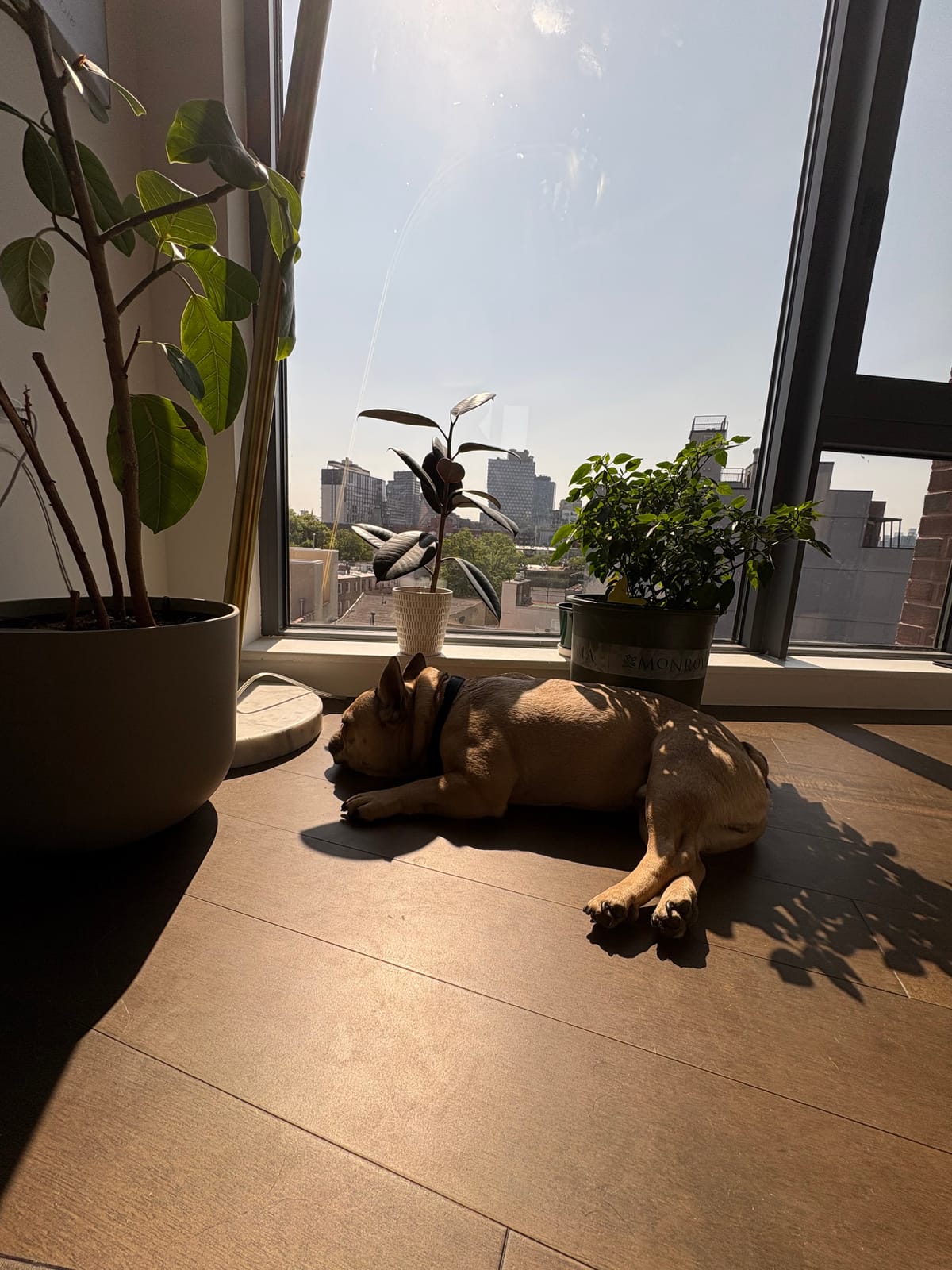
GOBLIN, THE MAYOR OF BROOKLYN: OR: HOW MY DOG TEACHES ME HOW TO TEACH
① Opening Vignette — “The Day Goblin Stopped the Street”
Goblin is 25 pounds of trouble wrapped in fawn fur, a delightful devil, a handsome little tyrant who believes every sidewalk was poured for him alone. No spacial awareness. The world is his oyster.
On this particular Saturday afternoon, he strutted down Jefferson like he always does, chicken nugget tail wiggling, head higher, pausing only to sniff the air like a king greeting his subjects.
We stopped in front of a couple sitting against a brick facade. They coded as unhoused, maybe in recovery, maybe just carrying a long day on their backs. I tightened the leash out of habit, pre-planning how quickly we’d shuffle by. The Old New Yorker in me told me to keep it moving and ignore. But Goblin had other plans. He pulled forward with that determined little grunt he makes, the one that says I’ve got work to do, human. Sometimes, when he plants, it feels like I’m pulling a kettle bell.
He walked straight to them, no hesitation, no fear, no correction needed, and pressed his entire warm body into their palms. They froze. One of them let out this sound I can only describe as a cracked laugh that had been sitting in the throat for years. The other started crying. “People ignore us all day,” the man said. “This guy… he came right to us like we was fams.”
“Well, he’s the mayor,” I said, shrugging. Goblin pawed at them. Their faces looked lived in.
I swear… Goblin teaches belonging better than any PD I’ve ever been to. If Brooklyn ran elections for “Public Servant of the Year,” he’d win in a landslide. He makes strangers feel like neighbors. He softens the sharp edges of the day.
And somewhere between that moment on the street and morning meeting on Monday, I realized, again, that the mundane pieces of my life are not separate from my teaching. They walk in with me. They shape the way I show up. They are the curriculum behind the curriculum.
Goblin is arguably a better human than me. And my students know it.
② The Lesson / Framework — “Dogs as Abolitionist Pedagogues”
I tell my students Goblin stories all the time, half because he’s objectively adorable and half because it changes the room.
Abolitionist pedagogy teaches us that classrooms aren’t built on rules; they’re built on relationships. And relationships are built on humanity: messy, tender, soft, real. When I share Goblin’s latest shenanigans, I’m not giving them a cute anecdote.
I’m giving them permission:
- to laugh
- to relax
- to see me as a human being with a life beyond a rubric
- to show up with their own lives, their own stories, their own creatures who help them live an abundant life
Invoking Goblin shifts the power dynamic. Suddenly the classroom isn’t a fortress of expectations, it’s a living room. A circle. A community of humans who exist in the world and bring their worlds to this table.
From a UDL lens, Goblin stories open multiple pathways to connect:
the kids who love animals, the kids who are shy, the kids who carry quiet sadness, the kids who don’t know how to reach adults, they all find a way in. Students carry so much when they come to class, and Goblin is here for it all.
From a SEL competencies perspective, my dog becomes a proxy teacher for:
- empathy
- care
- presence
- attunement
- vulnerability
And in true abolitionist fashion, Goblin refuses disposability. He sees no one as “other.” He sees no one as “dangerous.” He sees no one as invisible. Kids pick up on that. They mirror what we elevate.
Goblin models the world we’re trying to build—one nose boop at a time.
③ The Practice / How-To — “Teaching With Your Dog (Even When He’s at Home)”
Here’s how Goblin shapes my teaching practice in real, concrete ways.
1. Morning Check-In: “Goblin’s Question of the Day” (Restorative Ritual)
On the board each morning:
“Goblin wants to know… how’s your heart today?”
or
“Goblin asks… who did you show kindness to this weekend?”
or
“Goblin wonders… what made you laugh recently?”
Students write on sticky notes, and we gather them in a quick restoration moment.
2. The Goblin Tarot Badge (Guild Mechanic)
If a student shows extraordinary kindness or softens the room in a Goblin-like way, I award:
Tarot Badge: “Mayor of the Moment”
Visual: to offset the digital badge of it all, it looks like it was stitched together, Goblin’s handsome mug:
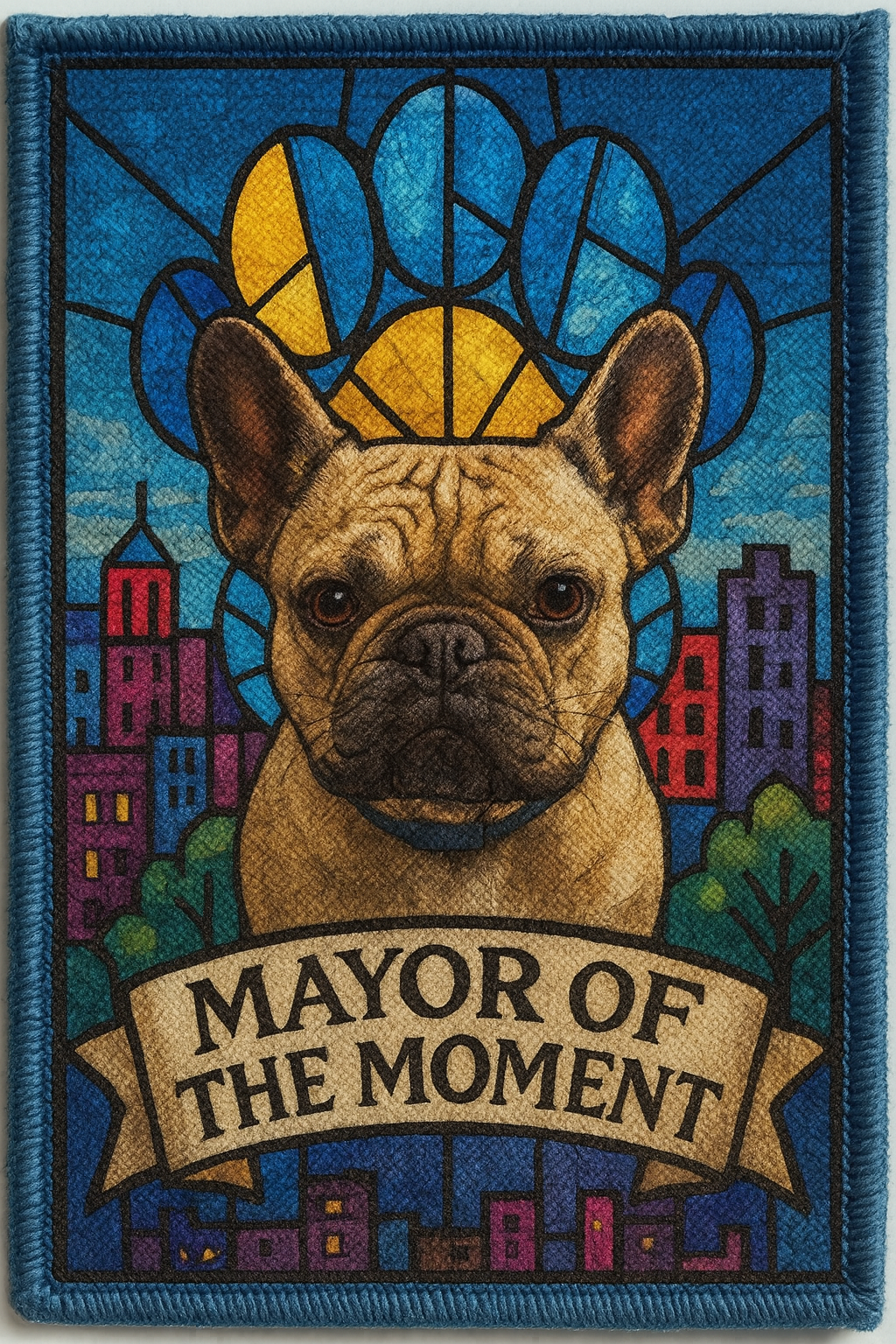
XP reward: +25 for Community Building
(Student receives a prompt: “Who will you see today that others might ignore, and how will you greet them?”)
3. Writing Warm-Up: “Goblin’s Walk”
Students choose one:
- Describe someone Goblin would instantly trust.
- Write about a time you encountered someone you might have overlooked.
- Invent a Goblin adventure in your neighborhood.
Brings imagination, empathy, narrative craft.
4. Political Classroom Question (Democratic Practice)
“Goblin treats everyone like they’re worthy of attention.
What would our city look like if our institutions did the same?”
We let students pursue that question: policing, public health, housing, education.
It’s a gentle entry into hard truths.
Some good push back, too: “Mr. Robles, I think it’s mostly safe for you to talk to strangers on the street, but for me, I don’t know if that’s a good idea.”
Whoa. Good call. XP +50 for pushing back against your teacher.
5. CER Mini-Task
Claim: Goblin’s behavior on the street demonstrates the power of unconditional regard.
Evidence Options:
- His choice to approach the couple
- Their emotional reaction
- Their statement about being ignored
Reasoning: Actions that affirm humanity can disrupt cycles of isolation and restore dignity.
Goblin softens an otherwise difficult humanities assignment—CER with heart.
④ Closing — “What My Dog Knows That I’m Still Learning”
Here’s the truth:
I bring Goblin into the classroom because he reminds me who I want to be as a teacher.
Present.
Kind.
Unrushed.
Unembarrassed by loving the world out loud.
Unafraid to greet the people most others turn away from.
He is my reminder that abolitionist teaching isn’t a set of strategies, it’s a way of seeing. The way he scans a block for souls, not social pariah. The way he welcomes everyone like they’re already part of the family.
Students feel that energy.
They soften because I soften.
They laugh because I open a door for laughter.
They share because I share.
They trust because I show them a little fawn-colored menace who trusts them first.
If Goblin teaches me anything, it’s this: our most sacred pedagogies are often the small, daily, mundane acts of being human in front of children.
May your classrooms be full of unexpected mayors, of Brooklyn or otherwise, who show your students the kind of world they deserve.
Because every child deserves a classroom designed for loving.


